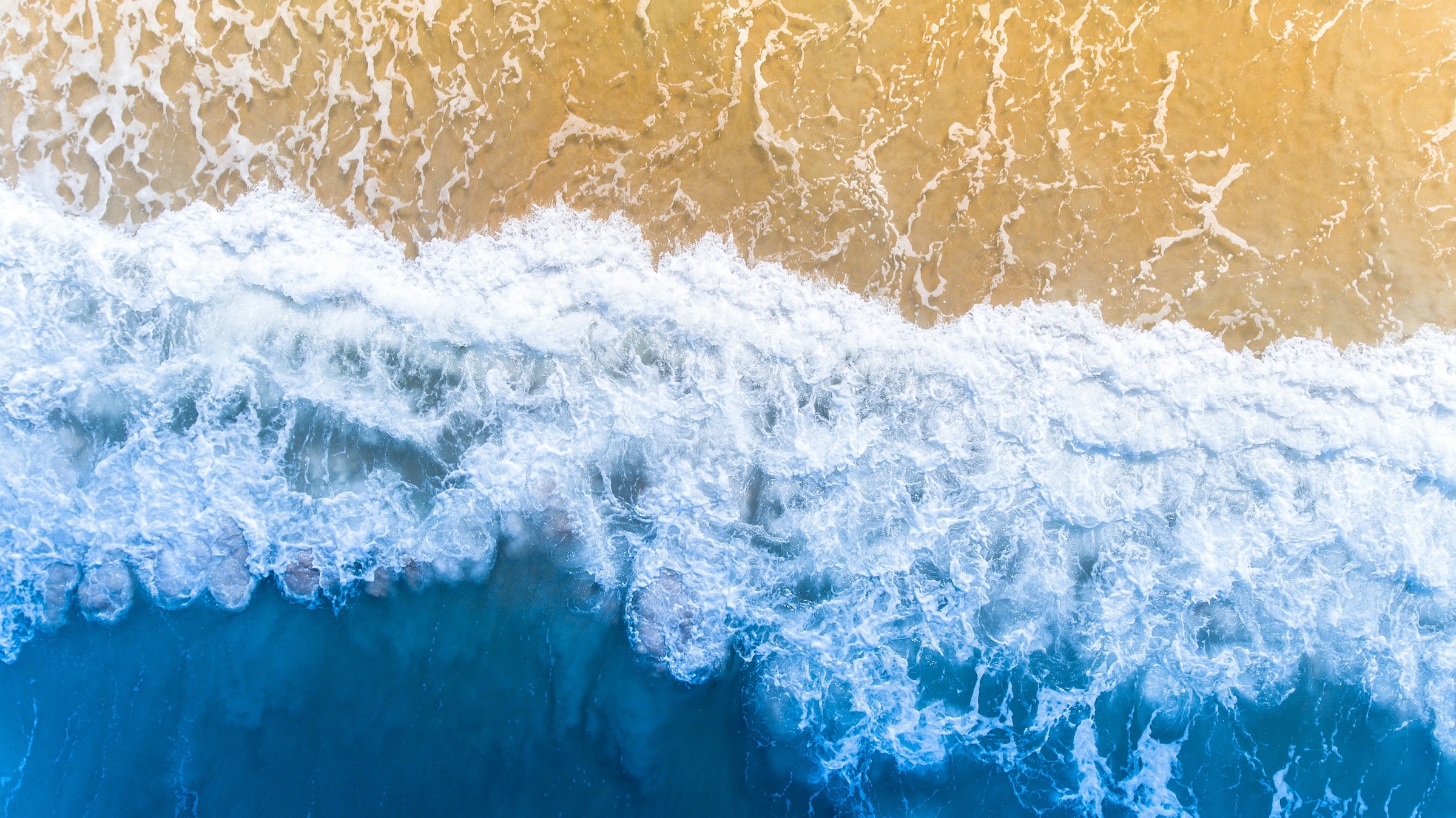 Faith & Science
Faith & Science
 Intelligent Design
Intelligent Design
 Life Sciences
Life Sciences
In the Case of Water, an Inference to Intelligent Design Is Independent of Any Religious Claim

Water is the most extraordinary substance! Practically all its properties are anomalous, which enabled life to use it as building material for its machinery. Life is water dancing to the tune of solids.
Albert Szent-Gyorgyi (1972)
It is often overlooked that the famous double-helical structure of DNA is not intrinsic to that molecule but relies on a subtle balance of energy contributions present in aqueous solution. Without water to screen the electrostatic repulsions between phosphate groups, the classic, orderly helix is no longer viable.
Phillip Ball (2008)
Water even in very small quantities influences dramatically a variety of physical and chemical properties of geological materials such as melting temperatures, melt chemistry, viscosity and density, phase equilibria, and reaction kinetics. Therefore water affects fundamental magmatic processes ranging from … [melting] to magma ascent, and crystallization to eruption.
Roberto F. Weinberg and Pavlína Hasalová (2015)
In this article I will explain why, as someone who is agnostic about many religious claims, I find the inference to intelligent design impossible to refuse. That follows from a consideration of the fine-tuning of the properties of matter for life as it exists on Earth. Here in particular I will describe various properties of water which convey a powerful impression of having been fine-tuned for terrestrial life. These include water’s various unique properties which make possible the hydrological cycle (which in turn makes terrestrial life possible); water’s unique fitness to form the medium of the circulatory system; its unique fitness to form the matrix of the cell including its hydrophobic property which plays an essential role in generating the higher order supramolecule structures in the cell; and its various unique thermal properties which make possible warm blooded organisms and play a vital role in climatic amelioration. This truly amazing ensemble of fitness manifests in the properties of one simple molecular substance, can have only one reasonable explanation — intelligent design.
Although through most of my life I have been relatively agnostic and I do not currently belong to any church or attend any religious services, I believe the inference to design is inescapable on any sensible consideration of the fine-tuning of the natural environment. As many proponents of ID have pointed out, the inference to design is made in many different disciplines about many different phenomena. Researchers in archaeology and criminology, scientists seeking evidence of intelligent life in outer space, must in many instances judge an artifact, a particular pattern, or occurrence to be the result of design rather than chance. In such cases — self-evidently — an inference to design has absolutely nothing to do with religious belief.
The fine-tuning of the physical constants of nature for a habitable universe, one that contains stable solar systems and Earth-like planets, has also struck many secular cosmologists as highly suggestive of design. Paul Davies saw the fine-tuning of the cosmic constants as conveying an “overwhelming impression of design.” And Fred Hoyle famously proclaimed:
A commonsense interpretation of the facts suggests that a superintellect has monkeyed with physics, as well as with chemistry and biology, and that there are no blind forces worth speaking about in nature. The numbers one calculates from the facts seem to me so overwhelming as to put this conclusion almost beyond question.
And so it is also with water.
The Hydrological Cycle
Consider first water’s unique fitness for the hydrological cycle, a cycle vital to all terrestrial life on Earth, including ourselves. To begin with, water is the only substance which is capable of existing in three material states — liquid, gas, and solid — in the ambient temperature range on the Earth’s surface. It is this unique capacity which enables the grand hydrological cycle, enabling liquid water to evaporate as a gas (water vapor) from the sea, to condense into drops of water in the clouds, and to fall as rain (liquid water) or snow (solid water) to the ground and to eventually flow back via rivers of liquid water or glaciers (rivers of solid water) to the sea.
Thus water because of its unique capacity to exist in the three material states is uniquely fit to enable the hydrological cycle and thus to provide a continual supply of water for terrestrial life.
But life on the land requires in addition to water a continuous supply of the essential elements of life. The four main atoms of organic matter — C, H, O and N — are derived from the atmosphere and water; but the other essential atoms — including Na, P, S, Cl, K, Ca, Mn, Fe, Co, Ni, Cu, and Zn — must be leached from the rocks (their only source for land-based life) as the rivers return to the sea. They are then distributed to the terrestrial hydrosphere, making them available to land-based life. But what is truly amazing — the word is carefully chosen — is that water possesses an additional ensemble of properties which are profoundly fit to erode and leach the essential minerals from the rocks.
These additional elements of fitness include: (1) water is an excellent solvent; (2) water possesses a low viscosity and consequent high mobility, which in conjunction with the tiny flakes of rock it carries promotes erosion of the rocks; (3) water possesses a high surface tension (one of the highest of familiar fluids) which draws water into the crevices in the rocks; (4) in the higher latitudes and altitudes water’s expansion on freezing (virtually unique) causes further cracking of the rocks, assisting further in the erosional process; and (5) when water reacts with the CO2 in the air, a mild acid solution (carbonic acid) is formed which further promotes the dissolution and weathering of the rocks.
But this is not the end. The delivery of water enriched with the minerals of life would be of no avail without water retaining soils which are essential for the growth of all plants and trees. These need a reliable and continuous supply of water. In water-retaining soils the water is held in the micropores (preventing rapid drainage and loss of ground water) because of water’s high surface tension (which already as mentioned plays a role in enhancing erosion by being drawn into narrow crevices and cracks in the rocks).
It is almost beyond belief that the same erosional process which ultimately leaches the minerals from the rocks generates at the same time the water-retaining soils, enriched with the necessary nutrients for life. And what physical force holds the water in the micropores in the soil? None other than the high surface tension of water itself!
Finally, perhaps the most remarkable aspect of the cycle is that the unique elements of fitness of water for erosion and weathering can only be exploited because of a prior element of fitness, i.e., water’s unique capability of existing in three material states in the ambient conditions on Earth. And again, the fitness of water-retaining soils so essential for plant life can only be exploited because of the prior fitness of water for the erosion of the rocks.
Thus the properties of water which are exploited in the hydrological cycle form what is in effect a teleological hierarchy of fitness. In this hierarchy, one unique property of water enables the exploitation of a subsequent ensemble of properties to achieve a vital life-giving end. I can think of no single set of facts in all of science more suggestive of design.
The Circulation
Curiously, another vital cycle — the circulation of blood in the body of complex organisms — is also dependent on various unique properties of water which forms the basic medium of the blood. Its excellence as a solvent is no less important for its role in the circulation as it is in leaching the minerals from the rocks in the hydrological cycle. And again, as mentioned above, its low viscosity which confers mobility to water in the hydrological cycle (enhancing the rates of erosion) is also a vital element of fitness for the circulation which together with the relatively low density of water enables the heart to pump the blood through the capillary bed. Self-evidently, if the viscosity of blood were even just slightly greater, similar to that of many other fluids, pumping the blood through the capillary bed would be impossible. As it is, the energy that must be devoted to pumping the blood through circulatory system is about 10 percent of the energy budget in man and in many other vertebrates.
The Cell
Consider next the fitness of water to form the matrix of the cell. This ensemble includes again its low viscosity (which provides a highly fluid medium for the rapid movement of molecules inside the cell), and its excellent powers as a solvent (which enable it to carry in solution a vast inventory of molecular species). But it has another vital property, less well known but that is essential for the generation of the higher structural order of the cell, water’s hydrophobic property (or force). This arises from the relative electronegativities (attraction to electrons) of hydrogen (H) and oxygen (O) where oxygen being much more electronegative than hydrogen attracts electrons more strongly than hydrogen, leaving the oxygen atom in the water molecule (H2O) negatively charged and the hydrogen atoms positively charged. Having both negative and positive charges, water is termed a polar compound. And this has a major consequence because it means that other polar or charged substances are attracted electrostatically to the charged oxygen and hydrogen atoms, and are, so to speak liked by water and readily soluble. On the other hand hydrocarbon chains for example, made up of C-H bonds are non-polar. Because the electronegativities of their constituent carbon and hydrogen atoms are close, both the carbon and the hydrogen atoms in C-H bonds are equally attractive to electrons and hence uncharged. And because the atoms in hydrocarbons are uncharged, they are not attracted electrostatically to either the negatively charged oxygen or positively charged hydrogen atoms in water and are not liked by water and unable to dissolve and forced, by what is termed the hydrophobic force, to clump together in water excluding complexes.
It is this force — the hydrophobic force— which causes the formation of the lipid-bilayer cell membrane by forcing the insoluble (non-polar) hydrocarbon chains of the phospholipids into the center of the cell membrane, away from the aqueous phase inside and outside of the cell. It is the same force which compels the non-polar side chains of amino acids to clump together in the center of proteins during folding and stabilizes the mature native form after folding. The hydrophobic force also plays a role in stabilizing the DNA helix as well as in enzyme-substrate complexes.
The importance of the hydrophobic force in ordering membranes and other higher order structures in the cell can hardly be exaggerated. For it is hard to imagine how the higher structural order of the cell could be achieved in any other way except by exploiting water’s hydrophobic force. In other words, life and indeed the very existence of the carbon-based cell is critically dependent on water’s hydrophobic force. The protein chemist Charles Tanford was not exaggerating when he said:
The hydrophobic force is the energetically dominant force for containment, adhesion, etc., in all life processes…This means that the entire nature of life as we know it is a slave to the hydrogen-bonded structure of liquid water.
Water’s fitness to form the matrix of the cell is, as far as is known, completely unique. No other liquid could replace water in this role. Moreover, in 3.5 billion years no other liquid has been utilized for the matrix of the cell in any organism. If water did not possess the exact suite of properties it does, no carbon-based cell would exist and, for certain, Earth would be devoid of life.
Endothermy
Consider next another completely different phenomenon — endothermy — which confers many advantages for advanced terrestrial life forms such as ourselves. This is critically dependent on a suite of unique thermal properties of water.
Firstly, water’s high specific heat (one of the highest of familiar fluids) buffers the body against changes in temperature, a vital element of fitness for any warm-blooded organism that maintains its body temperature at a fixed level (37-40 °C in birds and mammals) given that water makes up about 60 percent of the mass of the body.
Secondly, there is water’s high latent heat of evaporation (the highest of any molecular substance). This is another vital element of fitness when the environmental temperature rises above body temperature — as occurs in many geographical areas, not just in the tropics. Why is water’s high latent heat of evaporation so vital? Because the only way of reducing body temperature when the environmental temperature is above 37 °C is by the cooling effect of the evaporation of water on the skin. Human life in vast areas of the Earth is only possible because of this cooling effect.
And if that is not sufficiently remarkable, the other thermal property of water — its heat conducting capacity — is one of the highest among common fluids. This is an element of fitness which assists in the transport of heat from the tissues to the capillaries and from the capillaries to the skin in the periphery. So, these three thermal properties of water are each in turn uniquely fit to enable endothermy in advanced terrestrial vertebrates including ourselves.
Is it not beyond remarkable that as well as possessing unique fitness for the hydrological cycle, for the circulation, for the matrix of the cell, water also possesses just the right properties for endothermy? Are there any more disparate phenomena than these?
One might have imagined that these three thermal properties of water which enable endothermy might exhaust the number of thermal properties of water fit for life on Earth. But NO, there is another thermal property which plays a completely different vital role for life on earth — the expansion of fresh water below 4 °C (and seawater below 1.8 °C). This brings the coldest water to the surface and, in conjunction with the expansion of water on freezing (another nearly unique property of liquid water), prevents water from freezing from the bottom up and hence enables the existence of marine and freshwater life in the higher latitudes.
There are many other ways in which the properties of water play an essential role in vital processes and phenomena which enable life to flourish on Earth. Many of these are reviewed in my monograph The Wonder of Water. They include the way the thermal properties of water play a vital role in the great atmospheric and oceanic currents which bring the heat from the tropics to the cooler higher latitudes, ameliorating the climate of the Earth. Again, we now know that water also plays a critical role in lowering the viscosity of the rocks in the Earth’s mantle enhancing the tectonic recycling of the crustal rocks which ensures (and has ensured for billions of years) that the source of minerals for terrestrial life is continuously replenished.
In summary, it is the sheer diversity and multiplicity of the elements of fitness of water for life on Earth which is so astonishing. What we have in the properties of water — one simple molecular substance, H2O — is what is surely the most astounding ensemble of fitness to serve a universe of diverse ends embedded elegantly and parsimoniously in one simple molecular substance in all of nature.Not one, but innumerable properties of water are supremely fit to serve diverse ends critical for life: from the matrix of the cell to tectonic recycling, from the circulation of the blood to the erosion of the rocks. No matter what one’s philosophical or theological bias, the facts speak for themselves. There is no rational escape from the inference to design. The only explanation which makes any sense of the facts is that the properties of water were intelligently fine-tuned.
And there is a final extraordinary thought implicit in the fitness of the properties of water. Firstly, because these properties have remained unchanged since the very dawn of time, this implies that they must have been in the mind of a designer and ordained at the moment of creation. And secondly given their fitness for so many diverse phenomena and processes, this leads to the arresting thought that life on Earth and indeed beings of our advanced terrestrial design must also have been in the mind of the designer from the moment of creation. In other words, we were meant to be, and from the dawn of time. The universe, as Freeman Dyson put it, “must have known in some sense we were coming.”
Editor’s note: All scholarly references may be found in Dr. Denton’s monograph The Wonder of Water (Discovery Institute Press).

